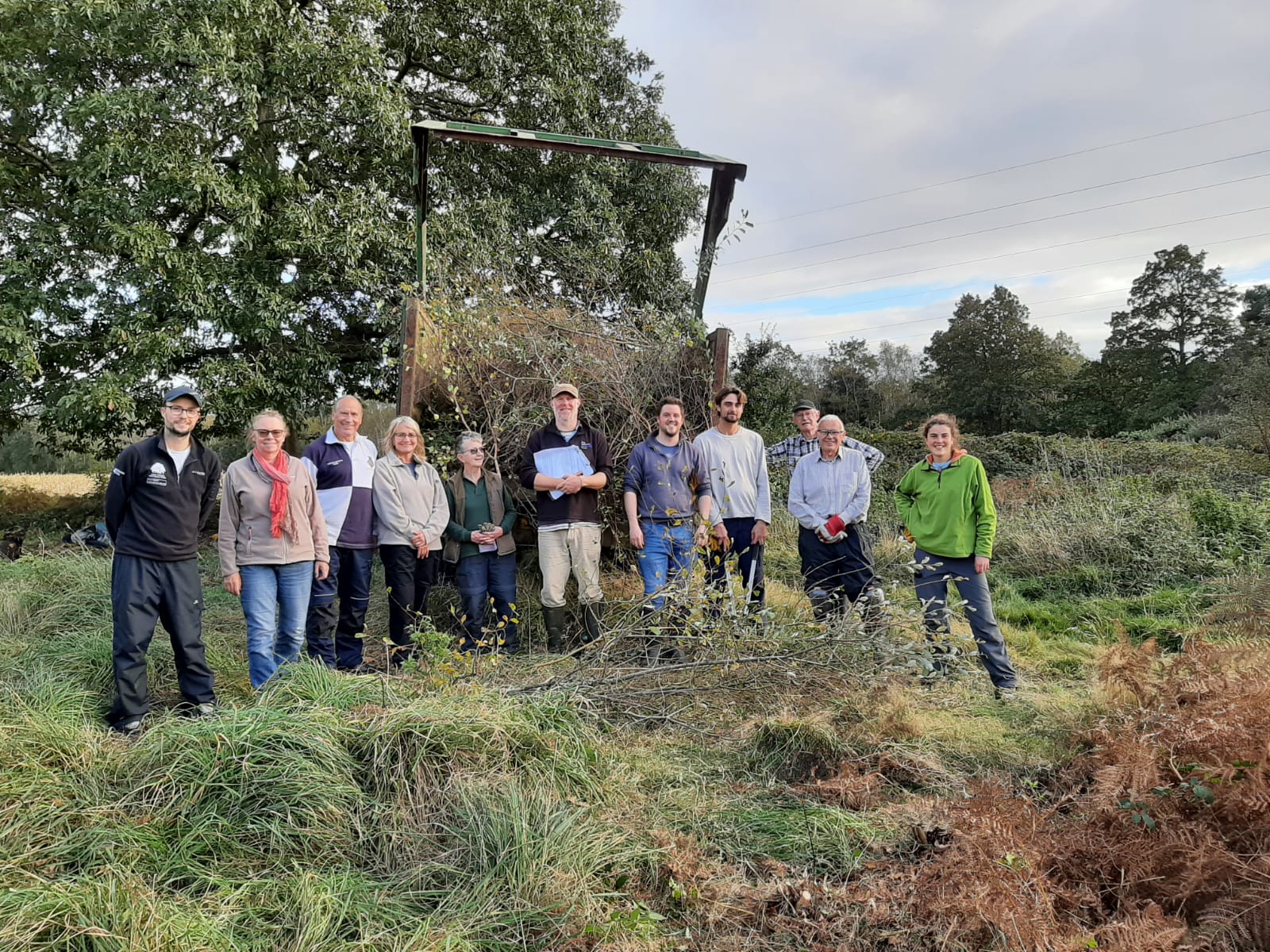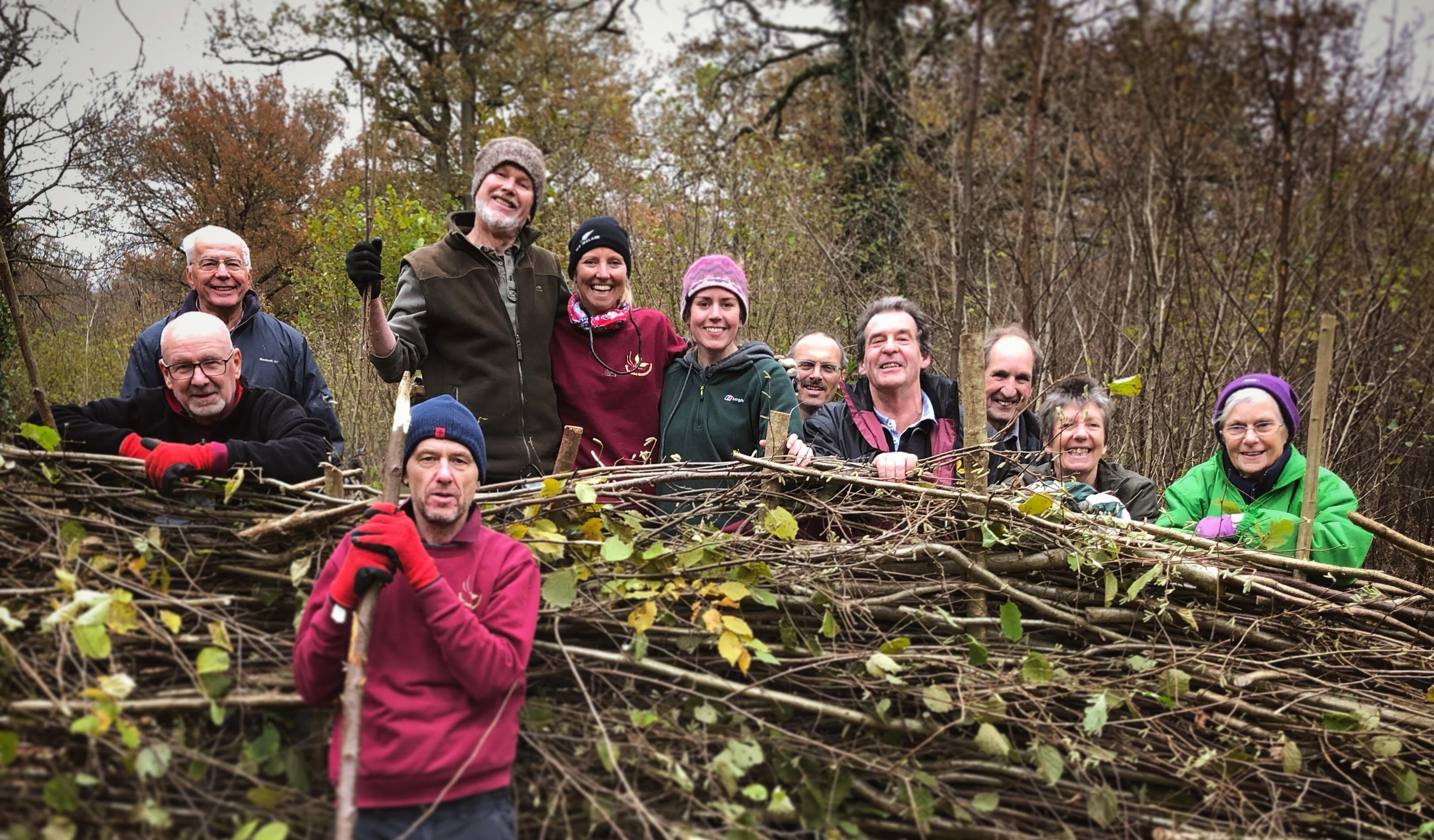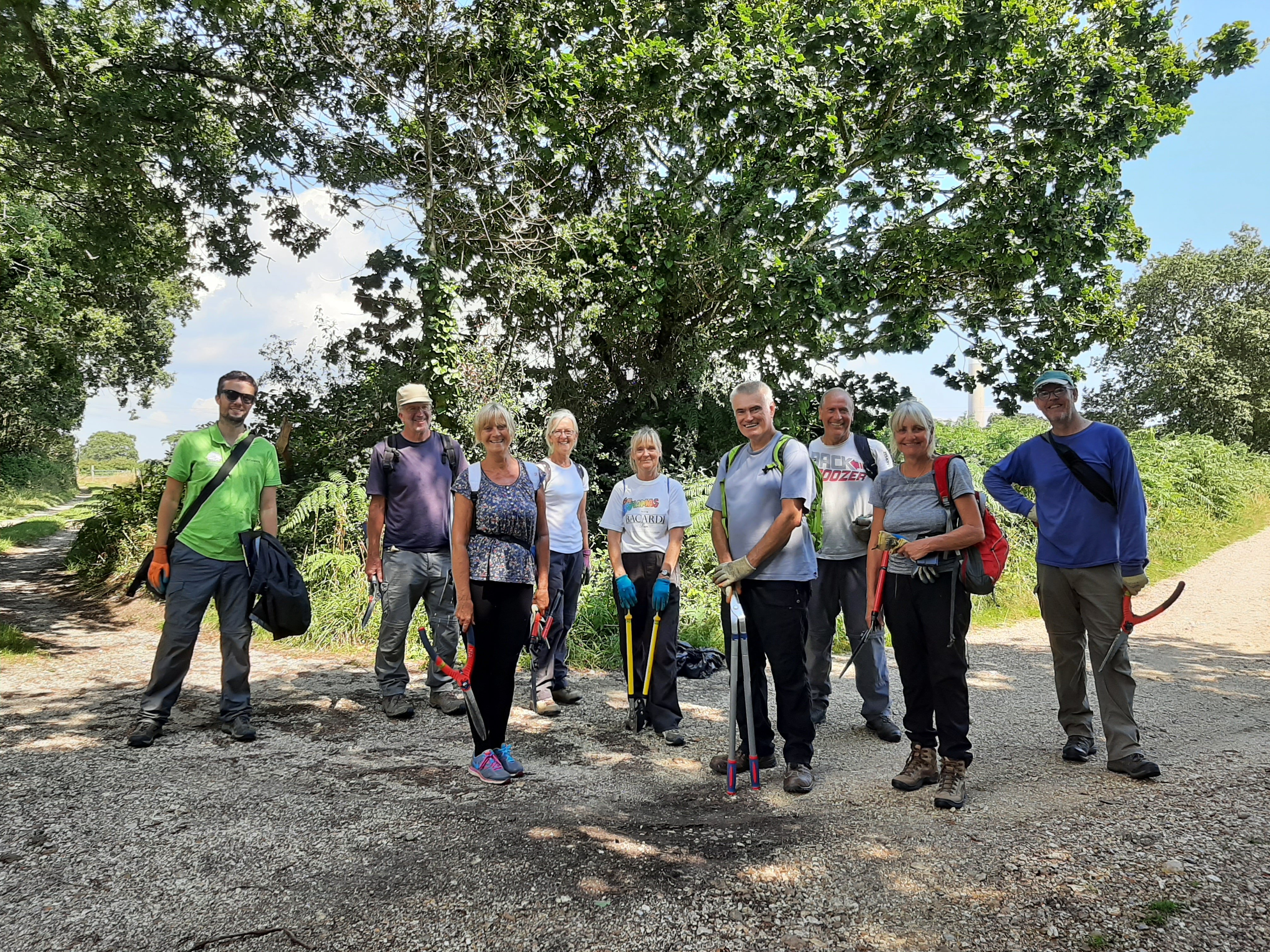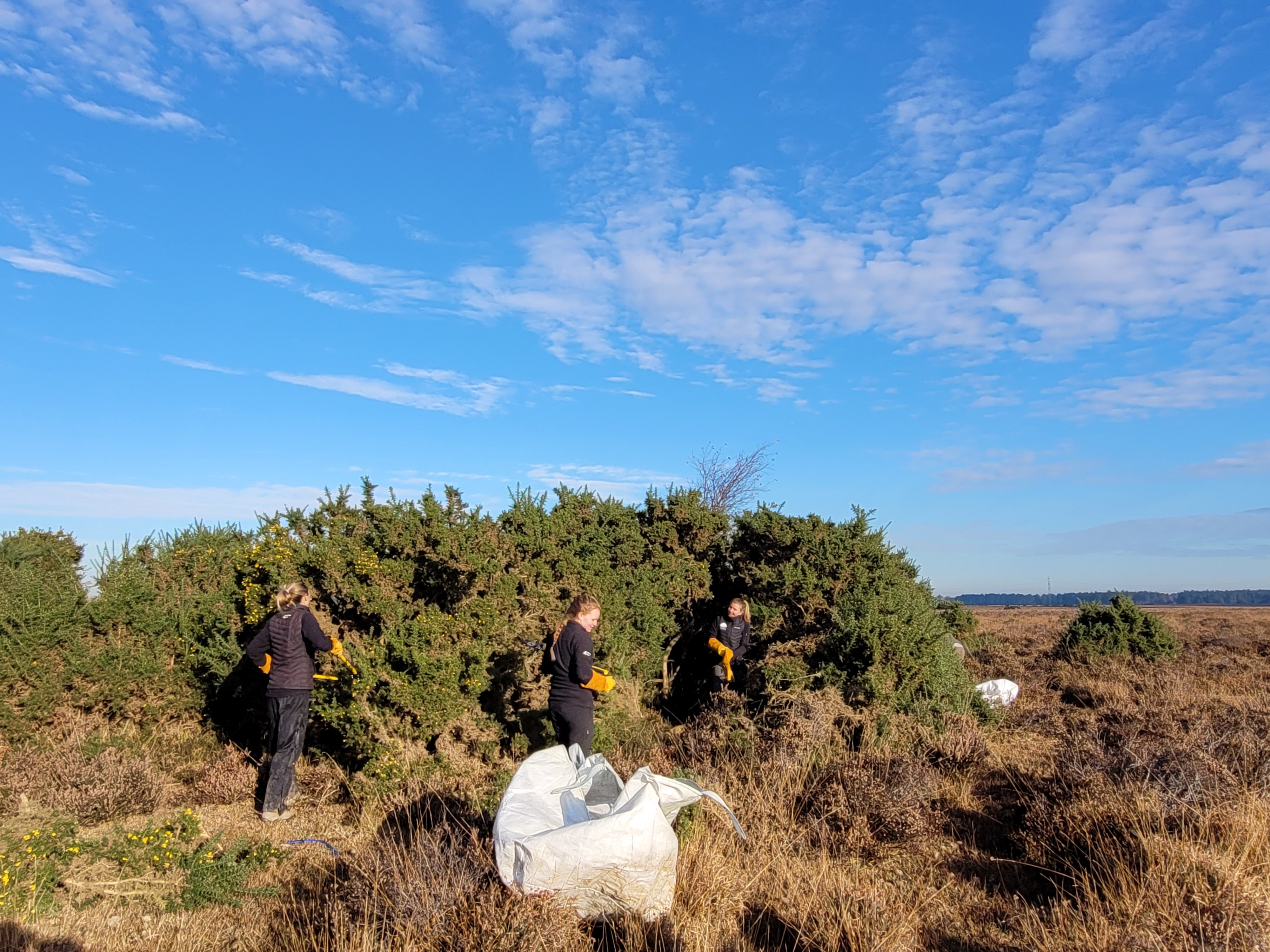What our volunteers achieved last winter
PUBLISHED ON: 9 JUNE 2022Now summer is almost here and the New Forest is starting to brighten with new life, visitors and better weather, it would be easy to let the tireless work of our volunteers over the winter pass us by.
Volunteers all around the New Forest gave their time, skills and energy over the winter to help make the National Park a better place.
Over the course of 47 action days, approximately 1,825 total hours were given by volunteers on various projects across the Forest – that is 109,500 minutes or equivalent to 1,216 football matches!
Come rain or shine, volunteers helped chop, dig and clear 13 different sites across the Forest. All of these sites were selected for areas of archeological or environmental significance.
One project ‘Woodlands and Wetlands’ run in partnership with the Freshwater Habitats Trust has overseen the clearance of invasive species in targeted woodlands. Volunteers have been helping to restore wet woodlands to their natural state by removing invasive species such as rhododendron, Scots pine and birch trees.
Angela Peters from The Freshwater Habitats Trust leads on this project. Here she explains the importance of the volunteers work to clear rhododendron:
Gemma Stride, also from The Freshwater Habitats Trust, explains why woodland management is so important in keeping the diversity of flora and fauna we see in the New Forest. She said:
Over the past 70 years woodland management has changed significantly leading to a closed canopy habitat impacting on the plant and wildlife diversity that woodlands have to offer.
A well-managed woodland will be an intricate mix of micro habitats including open space, areas of dappled light and freshwater features – ponds and wet flushes.
We have been working with volunteers and local contractors to remove invasive species such as Rhododendron. This species changes the soil for the worse creating soil conditions which are no longer suitable for native woodland flora to flourish. Removing invasive species is a positive management action to ensure the woodland ecosystem is restored to a biodiverse community of nature flora and fauna.
You may be asking yourself why this work is carried out in the cold and rain of the winter months – wouldn’t it be easier for the volunteers to work under the canopy of the summer’s green leaves? Well, Gemma has the answer for this too:
Woodland management work is carried out during the autumn and winter months as this minimises disturbance to wildlife such as invertebrate populations and nesting birds. Woodland work can take place after the bird breeding season at the end of August. However there may still be other species that will need careful consideration before carrying out woodland work and special checks on bats, badgers and other protected species will be considered when planning work within woodlands to minimise disturbance.
The Woodlands and Wetlands project is part of a wider scheme ‘the Green and Blue Horizons From City to Forest’. The scheme is a multi-partner project which brings an £800,000 investment into the New Forest. The project is funded by the Government’s Green Recovery Challenge Fund. The fund was developed by Defra and its Arm’s-Length Bodies. It is being delivered by The National Lottery Heritage Fund in partnership with Natural England, the Environment Agency and Forestry Commission.
The Green and Blue Horizons project has also funded the role of ‘Volunteer Coordinator’ at the New Forest National Park Authority, a position held by Richard Austin. Richard has been involved in the organisation and running of all volunteering events associated with the NFNPA.
Helping in the effort to manage woodlands is not the only work our volunteers have been doing over the winter, they have also been involved in important vegetation clearance on sites of archaeological significance.
86 volunteers attended 34 archaeological task days over the winter months. During this period volunteers played a vital part in the conservation of historical sites including Bronze Age monuments, some over 4,000 years old!
The bulk of their work consisted of clearing gorse and bracken as the roots can damage these historic features whilst also encouraging burrowing.
Seven sites were identified for clearance over the winter: Barrows at Hilltop Heath, Crockford Inclosure, Hawkhill Incosure, Longslade View, Wilverley Pit, Whitemoor Pond and Roundhills campsite.
Hilde van der Heul, Assistant Community Archaeologist at the New Forest National Park Authority, explains more on the historical significance of these sites and the importance of protecting them. She said:
Bronze Age round barrows, also referred to as burial mounds, were built from the Early Bronze Age into the Middle Bronze Age, from around 2,200 till around 1,100 BC. This period saw the first metal tools, weapons and jewellery arrive in Britain, along with a new kind of pottery.
Round barrows can be identified as circular mounds, often surrounded by a ‘ring ditch’ from which the earth for the mound was dug. Most of them were raised over a central burial in the centre, presumably that of an important member of the Bronze Age community. We often find evidence of later burials in and around barrows called ‘satellite burials’, making these monuments long lasting and important features for the then local communities.
Gorse, bracken and other vegetation can be damaging to these historic features through root intrusion and the encouragement of animal burrowing. The results of the clearance work can look quite severe at first, but as less damaging vegetation returns this will soften over the following months. All work followed guidance set out by Historic England to avoid damage to the Scheduled Monuments.




As well as protecting historical landmarks, these projects have provided an opportunity for volunteers to gain skills and work towards a common goal as Hilde explains:
After initial ‘tool talks’ the teams got stuck in bashing down bracken and later, with the aid of thick gloves, cutting down and clearing the gorse.
The volunteers expressed delight at finally getting out and about again after several lockdowns and found it satisfying to see the direct results of their work as the barrows were cleared. The project has been very successful, and it is hoped that it will continue in future years.
The volunteering programme would not have been possible without the generous support of the Love the Forest scheme, with donations from its crowdfunding campaign totalling almost £9,000. A sincere thank you to all those who donated.
Volunteering is a great way to connect to nature and be part of a productive forest-wide effort of conservation and restoration.
If you would like to find out more or get involved follow the link to our volunteer page.

